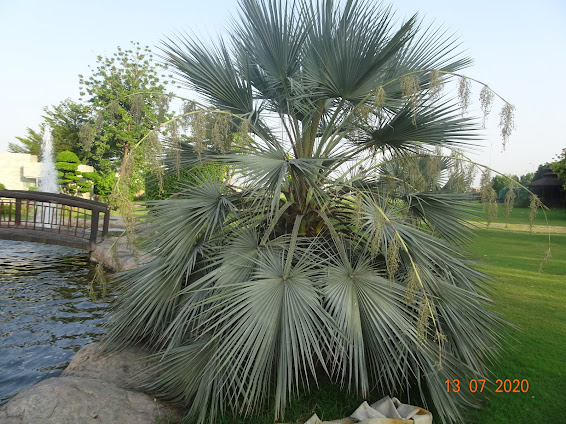Hyphaene coriacea is a clustering palm and grows in a group of 2 to 6. A hot weather happy palm. Temperature tolerant more than 48 C/ 120 F. Extremely drought tolerant. Can thrive in poor and exhausted soils. An important plant for semi- arid areas. It can provide drink and leaves for thatching (Cover/ roof building). A liquid is extracted from immature seeds and tastes like coconut water.
This palm was planted in year 2012, at its location.
 |
Doum Palm- Full sun evergreen palm. July 2020.
Beauty lies in its low branching of trunk even at ground level. |
 |
Ilala palm- Takes a decade to form a trunk.
Nice landscape plant. People can make palm wine.
Photo 4 Aug 2020. |
 |
Leaf used for basketry, hat and rope making. 4 Aug 2020.
A very distinctive feature is the curve,
which can be spotted in the video clip.
|
 |
The plant suckers and forms clumps.
Seeds ripen in two years and can hang for two years.
A poor quality alcohal drink is made out of
fermentation of sap tapping of the plant crown |
Enjoy reading, viewing and adopting the plant in hot areas.



























